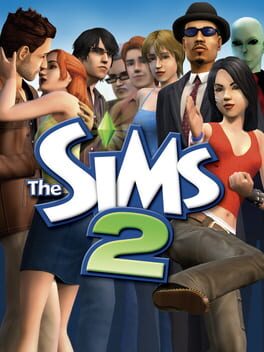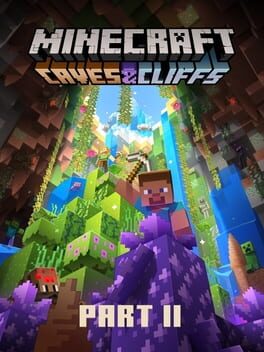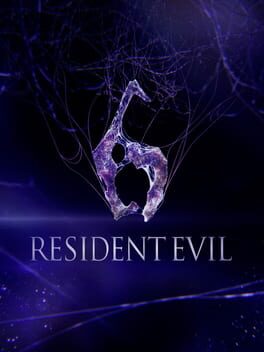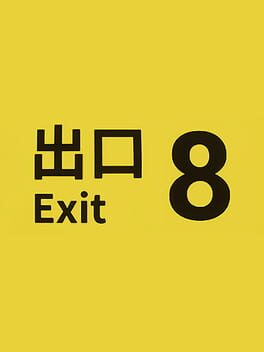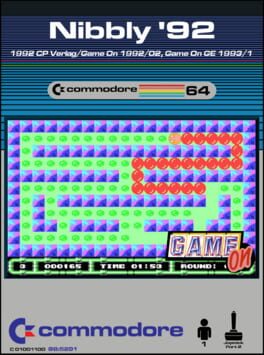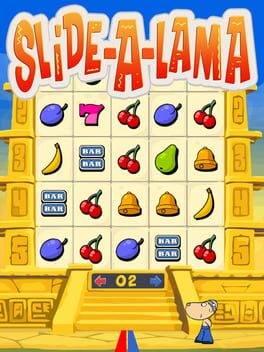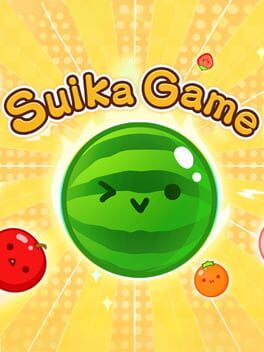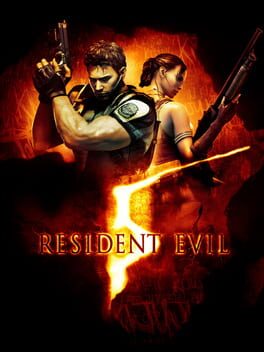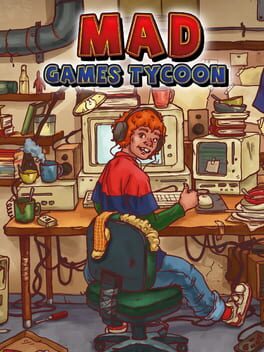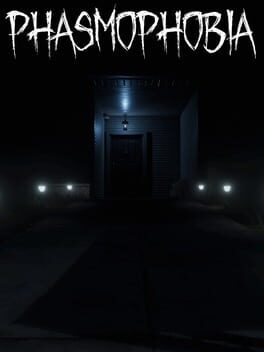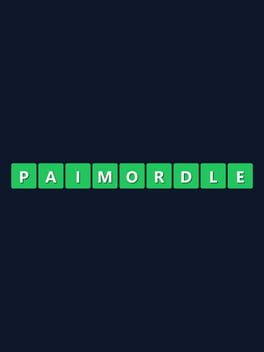TitanKaempfer
2004
The Sims 2 is the second main line entry for The Sims. For PC players, it was the first fully 3D Sims game. Not only did it introduce some of my favorite add-ons in the series, but also introduced a lot of new features that became a staple for the series.
The biggest new feature is aging. Sims 1 only had adults and kids and none of them would ever age, but this game lets you experience their lives from babies, to kids, to teens, (to young adults), to adults and up to elders. This also introduces an actual family tree. It also introduced the wants and fears system and genetics.
The coolest thing is something, that has never really been done ever again. This game lets you create your own neighborhood and sub neighborhoods, from street layouts imported through Sim City 4, to all the neighborhood decorations and every single lot, including actual accessible and useable community lots and with add-ons also college dorms, hotels, apartments and many more. If you don't want to do that, the base game comes with three premade towns as well, and most add-ons included some other neighborhood themselves to show off the new gameplay features.
When it comes to the actual gameplay, it's The Sims as you expect it. You control various family members and build houses. You let them apply to jobs, find love and get children, or let them die horribly in a mysterious pool ladder accident. The whole life simulation is filled with the well known quirkiness of The Sims series, like alien abductions and impregnation or becoming a literal superhero at the end of the law career.
In my opinion, it is also one of the most detailed Sims games. You have to actually go grocery shopping or order food, as your fridge doesn't magically teleport food into it, clothes have to be bought before you can change into them after Create-A-Sim, pizza slices are actually taken from an ordered pizza, Sims can lazily lie on couches and watch TV like actual people do, etc.
Graphically, it obviously aged. Hairstyles are often quite low poly and objects have quite rough edges, but I still prefer the whole look over the Sims 3 doll house abominations. (Comparing both games in non-modded state) Otherwise, the whole aesthetical style and soundtrack capture the vibe of the early 2000s. For example, there are a lot of clothing and hairstyle choices that are rather punkish or emoish. Some real life musicians of the time also provided some of their songs in Simlish like Katy Perry, Depeche Mode or Lily Allen.
For me, it's one, if not the best Sims game of all time. I still often return to it. It is a shame that EA made it unavailable to purchase, and I'm lucky that I've gotten the Ultimate Collection when it was given out for free on Origin.
If you have the chance to play it, give it a try - the modding community patched all the problems the game might have on newer systems, and do not worry about the whole save file corruption myths going around. I've played this game from my earliest childhood on and did many things that other people say would corrupt the game and it didn't. It's way more robust than one might think and especially with various tools to clean and backup your save files it is way more stable than ever.
Sadly it was the last Sims game which didn't feel like a cash grab, with add-ons that felt complete, new and fresh.
The biggest new feature is aging. Sims 1 only had adults and kids and none of them would ever age, but this game lets you experience their lives from babies, to kids, to teens, (to young adults), to adults and up to elders. This also introduces an actual family tree. It also introduced the wants and fears system and genetics.
The coolest thing is something, that has never really been done ever again. This game lets you create your own neighborhood and sub neighborhoods, from street layouts imported through Sim City 4, to all the neighborhood decorations and every single lot, including actual accessible and useable community lots and with add-ons also college dorms, hotels, apartments and many more. If you don't want to do that, the base game comes with three premade towns as well, and most add-ons included some other neighborhood themselves to show off the new gameplay features.
When it comes to the actual gameplay, it's The Sims as you expect it. You control various family members and build houses. You let them apply to jobs, find love and get children, or let them die horribly in a mysterious pool ladder accident. The whole life simulation is filled with the well known quirkiness of The Sims series, like alien abductions and impregnation or becoming a literal superhero at the end of the law career.
In my opinion, it is also one of the most detailed Sims games. You have to actually go grocery shopping or order food, as your fridge doesn't magically teleport food into it, clothes have to be bought before you can change into them after Create-A-Sim, pizza slices are actually taken from an ordered pizza, Sims can lazily lie on couches and watch TV like actual people do, etc.
Graphically, it obviously aged. Hairstyles are often quite low poly and objects have quite rough edges, but I still prefer the whole look over the Sims 3 doll house abominations. (Comparing both games in non-modded state) Otherwise, the whole aesthetical style and soundtrack capture the vibe of the early 2000s. For example, there are a lot of clothing and hairstyle choices that are rather punkish or emoish. Some real life musicians of the time also provided some of their songs in Simlish like Katy Perry, Depeche Mode or Lily Allen.
For me, it's one, if not the best Sims game of all time. I still often return to it. It is a shame that EA made it unavailable to purchase, and I'm lucky that I've gotten the Ultimate Collection when it was given out for free on Origin.
If you have the chance to play it, give it a try - the modding community patched all the problems the game might have on newer systems, and do not worry about the whole save file corruption myths going around. I've played this game from my earliest childhood on and did many things that other people say would corrupt the game and it didn't. It's way more robust than one might think and especially with various tools to clean and backup your save files it is way more stable than ever.
Sadly it was the last Sims game which didn't feel like a cash grab, with add-ons that felt complete, new and fresh.
It was one of those freeware games that somehow where on my PC as a kid.
The moment I figured out, that it is not only working for the desktop (where my exe file was lying around) but for every window that was opened, prior to starting the game, I started drawing bases in paint and placed termites around it and tried defending it, before it gets destroyed.
The moment I figured out, that it is not only working for the desktop (where my exe file was lying around) but for every window that was opened, prior to starting the game, I started drawing bases in paint and placed termites around it and tried defending it, before it gets destroyed.
2012
Unpopular opinion: It's really not as bad as people often claim it to be.
At first, I thought it was some bias I held just because it was the first game of the series I've ever played when it was new, but now that I've recently played it with a friend again, I just have to say it wasn't all that bad. That is not to say that it was perfect or anything, and it nothing compared to entries like Resident Evil 4, but it's not too bad. Way more fun than Resident Evil 5 in my opinion. Though I do understand that those looking for the classic Resident Evil survival horror experience won't be happy with it, as the game is way more on the action side, compared to previous titles.
What I like are the intertwined stories of each campaign. These consists of Leon's & Helena's, Chris' & Piers', Jake's & Sherry's and Ada's stories from 2012 to 2013 and take place in Tall Oaks, USA; Edonia, East Europe and Lanshiang, China.
Chris campaign probably was my least favorite as it was mostly all action and that it probably felt most like Resident Evil 5, which is my least favorite game in the series. His story starts in Eastern Europe after his troop gets killed due to a lady that appears to be Ada Wong. Working for the BSAA, he and his buddy Piers are trying to stop BOWs and prevent some acts of bioterrorism.
Leon's campaign, while still being filled with action, has also some quieter moments and is probably a bit more aligned with the classic Resident Evil feel. It starts with the president dying due to an act of bioterrorism, which he is later accused of. It's all about finding the real perpetrator. And in true Resident Evil fashion, it even ends with a rocket launcher!
Jake's story is all about Wesker's son, who has natural antibodies to the C-Virus, which makes him valuable in creating a vaccine. Jake and Sherry have their own little Nemesis alike that follows them through their campaign.
And lastly there is Ada Wong's campaign which ties all campaigns together and answers various questions. This is probably most true to the Resident Evil formula, not being as action filled as the other and more puzzle focused.
Gameplay wise I think the combat is quite good and Co-op (which I only played recently) is also fun. Now, there isn't really any inventory management unlike the previous titles, but it suits the more action themed entry a bit more.
Now, as already said, it's far from perfect. The levels are really linear and there are no documents to be found for more lore. Instead, you have to destroy blue medals all across the levels, some exclusive to some characters, to unlock extra lore in the main menu. And while I liked Co-Op, it was cheaply integrated into Ada's story, which didn't have Co-op at release. The second player is some random soldier, with no name or backstory. He does not appear in any cutscene and worst of all, he can't really interact with anything. You can't interact in puzzles, you can't do a lot of the quick time events to progress, you can't even open doors(!!!). The real player 2 treatment.
Now comparing this with other entries of the series, it's one of the weaker ones or mid at most, but looking at it as just a game, it's quite some fun. And better than 5!
At first, I thought it was some bias I held just because it was the first game of the series I've ever played when it was new, but now that I've recently played it with a friend again, I just have to say it wasn't all that bad. That is not to say that it was perfect or anything, and it nothing compared to entries like Resident Evil 4, but it's not too bad. Way more fun than Resident Evil 5 in my opinion. Though I do understand that those looking for the classic Resident Evil survival horror experience won't be happy with it, as the game is way more on the action side, compared to previous titles.
What I like are the intertwined stories of each campaign. These consists of Leon's & Helena's, Chris' & Piers', Jake's & Sherry's and Ada's stories from 2012 to 2013 and take place in Tall Oaks, USA; Edonia, East Europe and Lanshiang, China.
Chris campaign probably was my least favorite as it was mostly all action and that it probably felt most like Resident Evil 5, which is my least favorite game in the series. His story starts in Eastern Europe after his troop gets killed due to a lady that appears to be Ada Wong. Working for the BSAA, he and his buddy Piers are trying to stop BOWs and prevent some acts of bioterrorism.
Leon's campaign, while still being filled with action, has also some quieter moments and is probably a bit more aligned with the classic Resident Evil feel. It starts with the president dying due to an act of bioterrorism, which he is later accused of. It's all about finding the real perpetrator. And in true Resident Evil fashion, it even ends with a rocket launcher!
Jake's story is all about Wesker's son, who has natural antibodies to the C-Virus, which makes him valuable in creating a vaccine. Jake and Sherry have their own little Nemesis alike that follows them through their campaign.
And lastly there is Ada Wong's campaign which ties all campaigns together and answers various questions. This is probably most true to the Resident Evil formula, not being as action filled as the other and more puzzle focused.
Gameplay wise I think the combat is quite good and Co-op (which I only played recently) is also fun. Now, there isn't really any inventory management unlike the previous titles, but it suits the more action themed entry a bit more.
Now, as already said, it's far from perfect. The levels are really linear and there are no documents to be found for more lore. Instead, you have to destroy blue medals all across the levels, some exclusive to some characters, to unlock extra lore in the main menu. And while I liked Co-Op, it was cheaply integrated into Ada's story, which didn't have Co-op at release. The second player is some random soldier, with no name or backstory. He does not appear in any cutscene and worst of all, he can't really interact with anything. You can't interact in puzzles, you can't do a lot of the quick time events to progress, you can't even open doors(!!!). The real player 2 treatment.
Now comparing this with other entries of the series, it's one of the weaker ones or mid at most, but looking at it as just a game, it's quite some fun. And better than 5!
2023
A very short indie game, and by that I really mean very short. My first run took probably around 15 to 20 minutes, and getting all achievements took me yet another 30 minutes or so. It's really cheap too, so it's not anything bad here.
The game is essentially a game of can you spot the difference as you travel through this underground train station corridor on your way to exit 8. The rules are simple: If you spot any anomaly in the corridor return from where you came from, if everything is ok, proceed. Your goal is it to reach corridor 8 and find the exit. Each time you reach the main corridor, it will randomly pick any anomaly... Or not! And yes, this can even happen when you reached corridor 8 and are trying to get to the god-damn exit. Some anomalies are quite easy to spot, like the whole hallway being clustered with no smoking signs, and sometimes the changes might be quite small and make you question if there was always a camera in the corner. The punishment for not spotting any anomaly that is there or returning when there wasn't any anomaly is that you return to corridor 0. Other than that, there aren't really any dangers. You can 'die' from some anomalies (the actual fate in interacting with some of those anomalies is actually pretty open to one own's imagination), but it's not really worse than getting the state of the corridor wrong.
The simple idea paired with it's rather short playtime is the ideal combination for some quick in between game to fill some time, while making you question your own perception.
The game is essentially a game of can you spot the difference as you travel through this underground train station corridor on your way to exit 8. The rules are simple: If you spot any anomaly in the corridor return from where you came from, if everything is ok, proceed. Your goal is it to reach corridor 8 and find the exit. Each time you reach the main corridor, it will randomly pick any anomaly... Or not! And yes, this can even happen when you reached corridor 8 and are trying to get to the god-damn exit. Some anomalies are quite easy to spot, like the whole hallway being clustered with no smoking signs, and sometimes the changes might be quite small and make you question if there was always a camera in the corner. The punishment for not spotting any anomaly that is there or returning when there wasn't any anomaly is that you return to corridor 0. Other than that, there aren't really any dangers. You can 'die' from some anomalies (the actual fate in interacting with some of those anomalies is actually pretty open to one own's imagination), but it's not really worse than getting the state of the corridor wrong.
The simple idea paired with it's rather short playtime is the ideal combination for some quick in between game to fill some time, while making you question your own perception.
2019
After waiting for literal years' til it was released on any platform I own, I was finally able to play it on Nintendo Switch in 2022. I would've played it on PC, if my PC hadn't been broken at the time of release. There will be some small critique points, that stem from the Switch Port and or not part of the other version (as far as I know).
Firstly, sadly I was not able to experience the story spoiler free, because at some point I gave up of ever being able to play this game myself, so I not only watched the anime and read the manga, but also watched a Let's Play of the original and some part of the Royal content was streamed to me by an online friend via Discord. So I did not really have any "OMG? FOR REAL?!" moments or anything during any of the plot twists or anything, because I just knew already. It also took a huge part of motivation for me - which made me take huge breaks from time to time, but the third semester was the part I finally had a lot of new content and I binged through it.
But enough said: The story itself is great. The protagonist controls a student who helps a woman from getting assaulted. However, when police arrives, the whole situation gets turned around and the player gets charged for attacking the perpetrator. He is then sent away on probation and lives his lives in Tokyo, where he will visit the Shujin Academy. When he goes to school for his first day, however, he and a schoolmate arrive at what appears to be a castle - the first palace of the game. From there on, the player and all his future crew mates become the phantom thieves, who battle all the corrupted adults to cause a change of heart.
The game runs on an in game calendar based system. Some days have fixed content, while there are always weeks of free time in which the player themselves can choose how to spend their time. Each big action they do will use up a time slot, this includes meeting with confidants (which will also provide you with bonuses for the rest of the game) or increasing your social stats (which are needed to choose some options). The battle system is also very good and provides some tactical depth. For example, the main character can change their personas, with each having different elemental strengths and weaknesses, as well as different skills. If you attack the weakness of an enemy, or they attack yours, the attacker gains another attack for their round. So you always want to learn and attack your enemies weaknesses. If you knock every enemy down, you also get the chance to do an extra strong attack - the all-out-attack!
While the player experiences the game, they're accompanied by an almost perfect soundtrack composed by Shoji Meguro, whom also composed soundtracks of some of the previous entries in the series. There are some exceptions that I like somewhat less, like the Mementos theme, though this version of the game at least has some more variations.
My biggest critique points however would be the dungeons. Not their designs or puzzles or anything, but how often the player is stopped by their party members, because they have to discuss or comment on literally anything every 5 meters. This makes those dungeons drag on even longer than they should. Worst: If you ever decide to do a new game+, you'll have to endure those dialogues ALL OVER AGAIN. Sure, you can fast-forward through them, but still. Why?
Some other things that I noticed on the Switch port are the visual effects. All those effects run on low FPS for whatever reason. Directly after release it was worse, then it was fixed, and they ran quite smooth, but now they also run laggy again? Also, the save room doors often load in only on close distance, which leaves ugly holes in the wall, where they should be if seen from far away. Can't tell me those doors really are that performance heavy that they can't be rendered from far away. Can't really remember seeing that in any other version. Other than that, the port is quite well done and runs smooth.
Firstly, sadly I was not able to experience the story spoiler free, because at some point I gave up of ever being able to play this game myself, so I not only watched the anime and read the manga, but also watched a Let's Play of the original and some part of the Royal content was streamed to me by an online friend via Discord. So I did not really have any "OMG? FOR REAL?!" moments or anything during any of the plot twists or anything, because I just knew already. It also took a huge part of motivation for me - which made me take huge breaks from time to time, but the third semester was the part I finally had a lot of new content and I binged through it.
But enough said: The story itself is great. The protagonist controls a student who helps a woman from getting assaulted. However, when police arrives, the whole situation gets turned around and the player gets charged for attacking the perpetrator. He is then sent away on probation and lives his lives in Tokyo, where he will visit the Shujin Academy. When he goes to school for his first day, however, he and a schoolmate arrive at what appears to be a castle - the first palace of the game. From there on, the player and all his future crew mates become the phantom thieves, who battle all the corrupted adults to cause a change of heart.
The game runs on an in game calendar based system. Some days have fixed content, while there are always weeks of free time in which the player themselves can choose how to spend their time. Each big action they do will use up a time slot, this includes meeting with confidants (which will also provide you with bonuses for the rest of the game) or increasing your social stats (which are needed to choose some options). The battle system is also very good and provides some tactical depth. For example, the main character can change their personas, with each having different elemental strengths and weaknesses, as well as different skills. If you attack the weakness of an enemy, or they attack yours, the attacker gains another attack for their round. So you always want to learn and attack your enemies weaknesses. If you knock every enemy down, you also get the chance to do an extra strong attack - the all-out-attack!
While the player experiences the game, they're accompanied by an almost perfect soundtrack composed by Shoji Meguro, whom also composed soundtracks of some of the previous entries in the series. There are some exceptions that I like somewhat less, like the Mementos theme, though this version of the game at least has some more variations.
My biggest critique points however would be the dungeons. Not their designs or puzzles or anything, but how often the player is stopped by their party members, because they have to discuss or comment on literally anything every 5 meters. This makes those dungeons drag on even longer than they should. Worst: If you ever decide to do a new game+, you'll have to endure those dialogues ALL OVER AGAIN. Sure, you can fast-forward through them, but still. Why?
Some other things that I noticed on the Switch port are the visual effects. All those effects run on low FPS for whatever reason. Directly after release it was worse, then it was fixed, and they ran quite smooth, but now they also run laggy again? Also, the save room doors often load in only on close distance, which leaves ugly holes in the wall, where they should be if seen from far away. Can't tell me those doors really are that performance heavy that they can't be rendered from far away. Can't really remember seeing that in any other version. Other than that, the port is quite well done and runs smooth.
1992
Nibbly '92 is one of the games I've played on my father's old C64 as a kid, and I remember it being one of the games my late mother used to play a lot of the time.
If you don't know what this game is about, you can think of it like Snake from the old Nokia phones, but instead of eating one single dot every time, you'll have to eat a lot of dots in each level. Each dot eaten makes the snake also grow one tile. Each level becomes its own little puzzle to solve, as biting oneself leads to one losing the level.
The gameplay is accompanied by a nice SID-chip tune beat and unlike some other games of the era, the graphics are recognizable without using a lot of imagination.
If you don't know what this game is about, you can think of it like Snake from the old Nokia phones, but instead of eating one single dot every time, you'll have to eat a lot of dots in each level. Each dot eaten makes the snake also grow one tile. Each level becomes its own little puzzle to solve, as biting oneself leads to one losing the level.
The gameplay is accompanied by a nice SID-chip tune beat and unlike some other games of the era, the graphics are recognizable without using a lot of imagination.
2004
Slide-A-Lama is a competitive puzzle game in which two players take turns and put in new tiles to push others around in the hope of combining them into three of a kind. Every time a player gets points, some of the opponent's lamas will wander over the border. A player looses when they have no lamas left.
A simple game which I often used to play with others during my time on ICQ, with matches mostly decided by one's own or the opponent's stupidity of not seeing one very good move.
A simple game which I often used to play with others during my time on ICQ, with matches mostly decided by one's own or the opponent's stupidity of not seeing one very good move.
2021
Bought this game on the Japanese Nintendo Shop, when it wasn't yet officially available outside of Japan.
The game's idea is quite simple. You drop different fruits into a jar, trying to combine fruits of the same type, which will then fuse together to become the next fruit in the fruit tier list. The last fruit tier being the name giving watermelon (Suika in Japanese). Fusing two watermelons results in them vanishing. Each fruit fusion will give you points, so you're working up to get the biggest high score you can.
The challenge comes from the fact, that the fruits won't stay in place after being thrown in, very much unlike other types of games where you throw stuff down, trying to combine them to dissolve them unlike Tetris or Puyo Puyo. They can be pushed and roll around... Or simply said: They have physics to them. Sometimes you'll end up dropping a smaller fruit on top of another, in the hopes of it staying there, but then it rolls off the wrong side, and now you have some cherries stuck between two apples, that will hinder you from combining them like... EVER.
Despite the game's simplicity, it is very addictive and has a very cute art style to it. Its music can become quite repetitive over time, though.
The game's idea is quite simple. You drop different fruits into a jar, trying to combine fruits of the same type, which will then fuse together to become the next fruit in the fruit tier list. The last fruit tier being the name giving watermelon (Suika in Japanese). Fusing two watermelons results in them vanishing. Each fruit fusion will give you points, so you're working up to get the biggest high score you can.
The challenge comes from the fact, that the fruits won't stay in place after being thrown in, very much unlike other types of games where you throw stuff down, trying to combine them to dissolve them unlike Tetris or Puyo Puyo. They can be pushed and roll around... Or simply said: They have physics to them. Sometimes you'll end up dropping a smaller fruit on top of another, in the hopes of it staying there, but then it rolls off the wrong side, and now you have some cherries stuck between two apples, that will hinder you from combining them like... EVER.
Despite the game's simplicity, it is very addictive and has a very cute art style to it. Its music can become quite repetitive over time, though.
2013
"Hello? Hell... o?" is quite the short RPG-Maker game experience.
You'll start the game as Kazuki in a small one-room house. You're able to interact with various objects in the room, with most of them triggering an ending. There are 30 regular endings, 5 bad endings, 1 good ending and 1 true ending.
Some endings change the next play through. A quite unique idea that sounds good on paper, but was sadly rather poorly executed, because if you're going for the 100% like I did, it will kind of turn out to be a guessing game at some point, because suddenly you need to be in a certain iteration of the house and have to interact with the TV while the phone is ringing. The way to the true ending however was executed in an interesting way of two worlds connecting, and you have to achieve several endings in both mirror worlds to get to the true ending. The game also pulls some meta trolls, where it tells you, that you've "passed on" and can't start a new game... That is, until you restart the whole game...
While the true ending is quite cute and a happy one, some other endings are outright confusing. The worst offender is ending 30 however, which feels completely off. Whenever you check the curtains, there is a one out of six chance to trigger it and will reveal an almost nude Akari (but only from the backside). Why?
The game also quite fails in the graphical and audio aspects. The audio is ok, but most sounds are obviously rather cheap stock sounds that often don't really fit, while the graphics are not really giving me spooky vibes. I'm not really a fan of the RPG Maker VX Ace chibi style. The drawn artworks however are fine, this being some of the ghostly faces that may appear and some pictures during the good and true endings.
The game could have been a lot more. I don't know if it's author Ryuuichi Tachibana ever released other games, either prior or later on, but if they're still active, I hope they improve upon their game's weak points, because the idea is good, just poorly executed.
You'll start the game as Kazuki in a small one-room house. You're able to interact with various objects in the room, with most of them triggering an ending. There are 30 regular endings, 5 bad endings, 1 good ending and 1 true ending.
Some endings change the next play through. A quite unique idea that sounds good on paper, but was sadly rather poorly executed, because if you're going for the 100% like I did, it will kind of turn out to be a guessing game at some point, because suddenly you need to be in a certain iteration of the house and have to interact with the TV while the phone is ringing. The way to the true ending however was executed in an interesting way of two worlds connecting, and you have to achieve several endings in both mirror worlds to get to the true ending. The game also pulls some meta trolls, where it tells you, that you've "passed on" and can't start a new game... That is, until you restart the whole game...
While the true ending is quite cute and a happy one, some other endings are outright confusing. The worst offender is ending 30 however, which feels completely off. Whenever you check the curtains, there is a one out of six chance to trigger it and will reveal an almost nude Akari (but only from the backside). Why?
The game also quite fails in the graphical and audio aspects. The audio is ok, but most sounds are obviously rather cheap stock sounds that often don't really fit, while the graphics are not really giving me spooky vibes. I'm not really a fan of the RPG Maker VX Ace chibi style. The drawn artworks however are fine, this being some of the ghostly faces that may appear and some pictures during the good and true endings.
The game could have been a lot more. I don't know if it's author Ryuuichi Tachibana ever released other games, either prior or later on, but if they're still active, I hope they improve upon their game's weak points, because the idea is good, just poorly executed.
2009
Probably the weakest entry in the Resident Evil franchise (at least from the mainline games).
Using the ugly color filters that were popular at the time and apply them on the most forgettable locations ever, while you fight your way through hordes of enemies with almost no time to breath, before you run into the next horde. Everyone says it's fun in coop. Never had anyone to play it with and had to deal with an annoying AI partner for the short time I played.
Don't really want to touch that one again.
Does feel more like your average campaign of some military shooter instead of a survival horror game.
Using the ugly color filters that were popular at the time and apply them on the most forgettable locations ever, while you fight your way through hordes of enemies with almost no time to breath, before you run into the next horde. Everyone says it's fun in coop. Never had anyone to play it with and had to deal with an annoying AI partner for the short time I played.
Don't really want to touch that one again.
Does feel more like your average campaign of some military shooter instead of a survival horror game.
2019
An absolute masterpiece of a remake. I really wish the first game would also receive this treatment, because I really enjoy this type of gameplay over the original one.
Before I had played this game myself, I've only heard about Mr. X, and thought he would be super annoying, but it turned out he actually adds a lot of needed tension in the beginning and adds a strategic layer to the whole thing. "Which route should I take?" - "Can I shoot that enemy without alerting Mr. X?". This doesn't mean the parts after the police station aren't fun at all. They still feature nice puzzles and stunning graphics.
My biggest critique however would be that the second run is way too similar. Sure, there are differences, but it's still very close to the first run, which was also the reason I took a small break between them. But still necessary to see the true ending of the game.
Before I had played this game myself, I've only heard about Mr. X, and thought he would be super annoying, but it turned out he actually adds a lot of needed tension in the beginning and adds a strategic layer to the whole thing. "Which route should I take?" - "Can I shoot that enemy without alerting Mr. X?". This doesn't mean the parts after the police station aren't fun at all. They still feature nice puzzles and stunning graphics.
My biggest critique however would be that the second run is way too similar. Sure, there are differences, but it's still very close to the first run, which was also the reason I took a small break between them. But still necessary to see the true ending of the game.
2016
Mad Games Tycoon is a tycoon game made by two German siblings Stefan and Christian Pohl, whom both also worked on Software Tycoon in the early 2000s, a game with a similar premise. (The latter of these two siblings sadly passed away)
Like Game Dev Tycoon, the game starts right in the 1980s, but is more accurate in its historic representation. While Game Dev Tycoon only focused on Nintendo, Sony, Microsoft and Sega and a bit on the mobile market, this game also takes into consideration that Atari and other smaller competitors exist and has less bias and even goes up to the Nintendo Switch and a fictional PS5 (the real one was not out yet).
Comparing these two tycoon games, this one is also way deeper. You buy different offices buildings, but start in a garage and have to build various development rooms, similar to games like Theme Hospital. Your employees are also no all-rounders. Well, they can technically become some with the help of training, but they have different strengths. Some might be better graphic designers, others might be better programmers, and others may be audio specialists. Additionally, every employee has a feature and a genre they're good in.
Also, you're not alone on the gaming market and have a lot of competitors. Well... They're no real obstacle, though. If you become rich enough, you will be able to buy them and force them to develop games for your own console.
I enjoyed the game a lot, but now that there is a sequel to this one, that improves on every single point, there is no real point in playing this one.
Like Game Dev Tycoon, the game starts right in the 1980s, but is more accurate in its historic representation. While Game Dev Tycoon only focused on Nintendo, Sony, Microsoft and Sega and a bit on the mobile market, this game also takes into consideration that Atari and other smaller competitors exist and has less bias and even goes up to the Nintendo Switch and a fictional PS5 (the real one was not out yet).
Comparing these two tycoon games, this one is also way deeper. You buy different offices buildings, but start in a garage and have to build various development rooms, similar to games like Theme Hospital. Your employees are also no all-rounders. Well, they can technically become some with the help of training, but they have different strengths. Some might be better graphic designers, others might be better programmers, and others may be audio specialists. Additionally, every employee has a feature and a genre they're good in.
Also, you're not alone on the gaming market and have a lot of competitors. Well... They're no real obstacle, though. If you become rich enough, you will be able to buy them and force them to develop games for your own console.
I enjoyed the game a lot, but now that there is a sequel to this one, that improves on every single point, there is no real point in playing this one.
2020
Phasmophobia is probably the father of the ghost investigation games, that currently pop up. No matter if you prefer the other ones more or not, they probably wouldn't exist, if it wasn't for the success of this one.
I bought this game in October 2020. The world was still a hostage of the corona pandemic and various locations were still either closed or towns, cities or even countries still had active lockdowns going on. The game really profited from this like many other indie games, that got a time to shine, as people just had nothing much else to do with their free time.
Now, the game was quite different back in these days. Not only was a more buggy/glitchy, but there were fewer ghosts (and they didn't feel that unique), fewer maps, no real progression... All these things have improved over the course of development, and I'm still excited to see where the journey will lead us.
The game's main goal is explained quite easily. You, either alone or with up to 3 friends, enter a haunted location and try to identify the type of ghost that haunts it. To do so, you're provided with some base gear, as well as gear that you bought yourself. What makes this harder is that the missions are somewhat randomized every single time. The ghost will always be in another room, it will always be a different type of ghost, its aggression is randomized and even things like hiding spots in a building or the available cursed possession will change.
Ghosts will start hunting and try to kill the players the longer the investigation goes. Some may do so earlier and some later, while others may even have additional special conditions to hunt early, like lighting candles or talking.
Additionally, to the main goal of identifying the ghost, there are always three randomized side quests for you to do, that are completely optional. These can range from cleansing the ghost room with a smug stick to taking a picture of the ghost to escaping a hunt.
Due to its random mechanics the game can be a bit scary, if you're going in blind, but as with every horror game it will become less and less scary the more often you play it and if you decide to play with friends, it may become even less scary. Not that the game is that scary to begin with. I would consider it on the more light side, actually.
Nevertheless, I like playing this game with friends or just soloing the weekly challenges. But I would wish for some new maps at this point. Maybe some more unique ones. Maybe an abandoned train station or an older mansion.
* The review is about a game still in development. Depending on where development will take us, and when this review is read, it might be slightly inaccurate.
I bought this game in October 2020. The world was still a hostage of the corona pandemic and various locations were still either closed or towns, cities or even countries still had active lockdowns going on. The game really profited from this like many other indie games, that got a time to shine, as people just had nothing much else to do with their free time.
Now, the game was quite different back in these days. Not only was a more buggy/glitchy, but there were fewer ghosts (and they didn't feel that unique), fewer maps, no real progression... All these things have improved over the course of development, and I'm still excited to see where the journey will lead us.
The game's main goal is explained quite easily. You, either alone or with up to 3 friends, enter a haunted location and try to identify the type of ghost that haunts it. To do so, you're provided with some base gear, as well as gear that you bought yourself. What makes this harder is that the missions are somewhat randomized every single time. The ghost will always be in another room, it will always be a different type of ghost, its aggression is randomized and even things like hiding spots in a building or the available cursed possession will change.
Ghosts will start hunting and try to kill the players the longer the investigation goes. Some may do so earlier and some later, while others may even have additional special conditions to hunt early, like lighting candles or talking.
Additionally, to the main goal of identifying the ghost, there are always three randomized side quests for you to do, that are completely optional. These can range from cleansing the ghost room with a smug stick to taking a picture of the ghost to escaping a hunt.
Due to its random mechanics the game can be a bit scary, if you're going in blind, but as with every horror game it will become less and less scary the more often you play it and if you decide to play with friends, it may become even less scary. Not that the game is that scary to begin with. I would consider it on the more light side, actually.
Nevertheless, I like playing this game with friends or just soloing the weekly challenges. But I would wish for some new maps at this point. Maybe some more unique ones. Maybe an abandoned train station or an older mansion.
* The review is about a game still in development. Depending on where development will take us, and when this review is read, it might be slightly inaccurate.
2022
